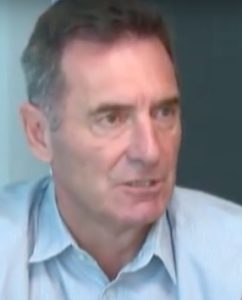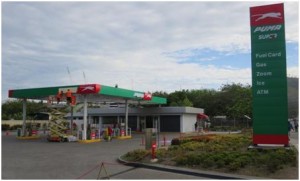Since 2014, Puma Energy has been Papua New Guinea’s major refiner and retailer of petroleum products. It’s also part of a global energy operation that spans 47 countries. Jim Collings, Country General Manager, explains some of the challenges of supplying a country which is still heavily reliant on diesel fuel.

Puma Energy’s Napa Napa refinery. Credit: BAI
Puma’s parent, Trafigura, is an energy trader. This shapes its country strategy, explains Puma’s General Manager in PNG, Jim Collings.

Puma Energy’s Jim Collings. Source: EMTV
‘The Puma business model tends to focus on locations where we can support that commodity trading and also take a step towards working within the supply chain all the way from activities in the commodities to the midstream and downstream parts of the business,’ he says.
‘Where the PNG business came into play was as a resource-rich country looking to manage both its internal energy needs and international export growth.
‘It also fits our model of being in a developing state, whereby we know we can go in and add value with our expertise in logistics and supply chain management.
‘Puma Energy purchased the midstream and downstream assets of InterOil.’
‘What we tend to do is look at assets that we can purchase and then add value to, through further investment in physical infrastructure, implementing world class process and systems, and heavy investment in people development.’
Assets
Puma Energy purchased the midstream and downstream assets of InterOil, including the Napa Napa oil refinery near Port Moresby and a chain of petrol stations, in 2014. InterOil had previously picked up the PNG assets of Shell and BP.
‘From our refinery here, we distribute it into 22 different terminals and depots around the country.’
‘It was a relatively small, strongly diesel-led, refinery: 34,00 barrels a day. That suits the market here because it is a diesel market.
‘We have the ability to supply the majority of the products for the country.’
Collings says the company employs about 650 people directly. ‘For every person employed there is somewhere between five and 10 more jobs created via contractors or in the community directly.’
Distribution
Collings says the logistical challenges are often very challenging and of a very diverse nature.
‘From our refinery here, we distribute into 22 different terminals and depots around the country—on the mainland and scattered islands. They are a combination of coastal and also inland depots. Those logistics we support through two coastal shipping vessels.
‘Also, we have a range of inland logistics. We truck product up from Lae through to Goroka and into Mt Hagen and the Highlands.
‘In other locations like Tabubil you deal with constant rainfall up to 10 metres per annum.’
‘That particular logistics exercise takes up to 24 hours to travel the round trip of somewhere in the order of 350 kilometres each way. The highway regularly floods and this makes the journey even longer.
‘In other locations, like Tabubil, you deal with constant rainfall up to 10 metres per annum, whereas Rabaul on New Britain Island is volcano and earthquake territory.’
Complexity

A Puma service station in Port Moresby.
Collings says PNG ranks in the ‘top five more complicated territories’ in which the company operates. But he says it is also in the top five countries in terms of scale.
‘It is an expensive place to play and in the fuel industry margins are very slim. It is tough but a positive investment for us.
‘We continue to invest; we have invested over and above our initial investment in purchasing the business.
‘We have put US$180 million into improving the safety elements around the business, including new wharves and jetties; upgrading the refinery; getting new tanks; and increasing the capability of the business through better logistics management.’
Economy
Collings tells Business Advantage PNG the general performance of PNG’s economy is critical to Puma’s business.
‘The structure of the economy, from our perspective, is that you have two or three large mining operations: Ok Tedi, Harmony and Lihir as examples, which drive volume uptake.
‘With commodity prices having recovered somewhat, they have increased their production, which drives volume for our business.
‘The second area comes from very strong agricultural performances from companies like New Britain Palm Oil, Ramu Agri and the coffee producers. All high quality and critical exporters.
‘The investment over the coming years in the network for power supply will continue to improve.’
‘The third area is power generation. The PNG Power network is going through its own development and there is a large amount of product we produce which is going into power generation in one way or another.
‘The investment over the coming years in the network for power supply will continue to improve and that will improve reliability. That unleashes a whole level of productivity, which is good for us as well.
The fourth tier is around the general transport, from shipping to land-based transport.’
Threats
Collings says the company’s biggest challenge currently is managing currency flows.
‘It is a big issue for the country. There is a structural deficit,’ he observes.
‘Part of that is to do with the structures around the LNG financing. I know the government is working very hard to manage the new arrangements that will come with new investment into the country.
‘Timing is a part of the problem because it takes a while for them to get into a position where the appropriate royalties come in.
‘But we are seeing that, within the next 18 months, we should be in a better place for the country and we will start to see more investments coming in as well.’








Speak Your Mind